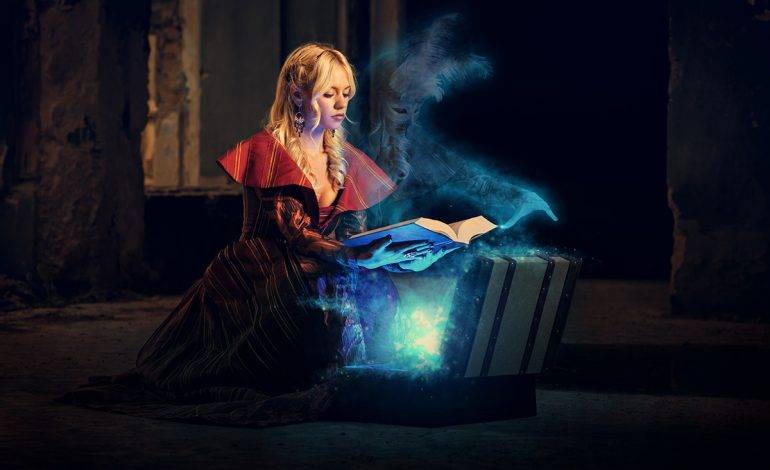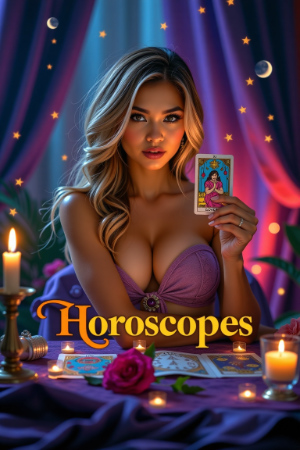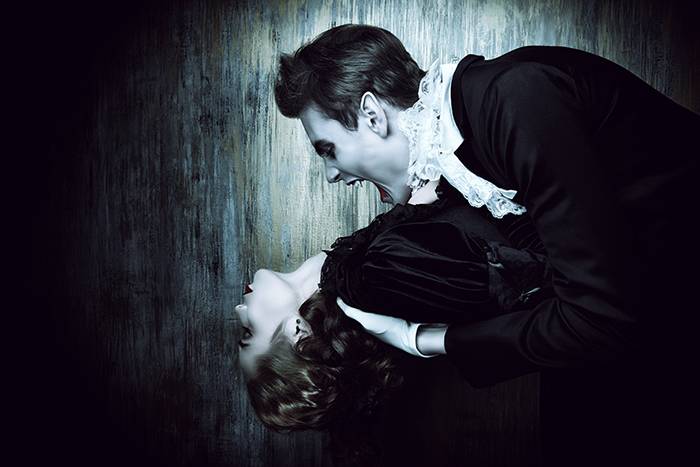
Introduction to Vampires
Vampires have been our dark companions in literature art, myth, and religion from the early centuries of civilization. Everywhere in the world there was belief in vampires, whether it was a walking corpse animated by a demon, or a bloodsucking ghoul, the vampire was always there in the dark, ready to strike.
As you explore the myths and legends of vampires in this article, you will come to better understand these mysterious, powerful, dangerous, exotic creatures and may even find the roots of your own fascination with them.
The majority of vampires of folklore aren’t pristine, white-skinned, radiant beings. Most are reanimated corpses in various states of disarray and decay. Since the vampiric creatures of lore were often hideous bloodsucking beasts, it’s easy to see why the mere thought of them instantly evoked fear.
The term vampire did not exist in ancient times, it did not appear in English until 1734, when it was used in an Anglo-Saxon poem titled “The Vampyre of the Fens”.
One of the earliest pieces of writing archeologists ever discovered, was a magical spell written in around 4000 B.C that would protect children from an attack from the Ekimmou. The Ekimmou is a type of vampiric spirit that would stalk the earth, attacking humans and possessing the body. Similar vampire myths then spread to the Ancient Egyptians, Babylonians and Inuits.
Many myths surrounding vampires originated from Eastern Europe between the 17th and 18th century. These tales formed the basis of vampire legends which later spread to Germany and England.
European Vampires
During the 18th century there was mass vampire hysteria throughout most of Europe. Vampire sightings were common, there were frequent grave diggings and staking in order to identify and kill the potential revenants. During this time the belief in vampires increased dramatically.
The first case in history that a real person was described as a vampire came from a village in Croatia, in 1672. The legend tells of a young man named Jure Grando, who lived in the village of Kringa. Jure died due to illness in 1656, however after his death locals claim to have seen Jure wandering around the village. The village priest, Giorgio, who had buried Jure, discovered that at night somebody would knock on the doors around the village, and on whichever door he knocked, someone from that house would die within the next few days. The village leader ordered that his body be exhumed and a stake be driven into his heart, so one night nine people went to the graveyard and dug up Jure’s coffin, they attempted to piece his heart with the stake but were unable to penetrate his flesh. They then took a saw and sawed the head off the corpse. Once the saw tore through his skin, the vampire screamed and blood began flowing out from the cut. According to folklore, peace finally returned to the region after Jure’s decapitation. Today, it is commemorated by the Vampire coffee bar in the center of town.
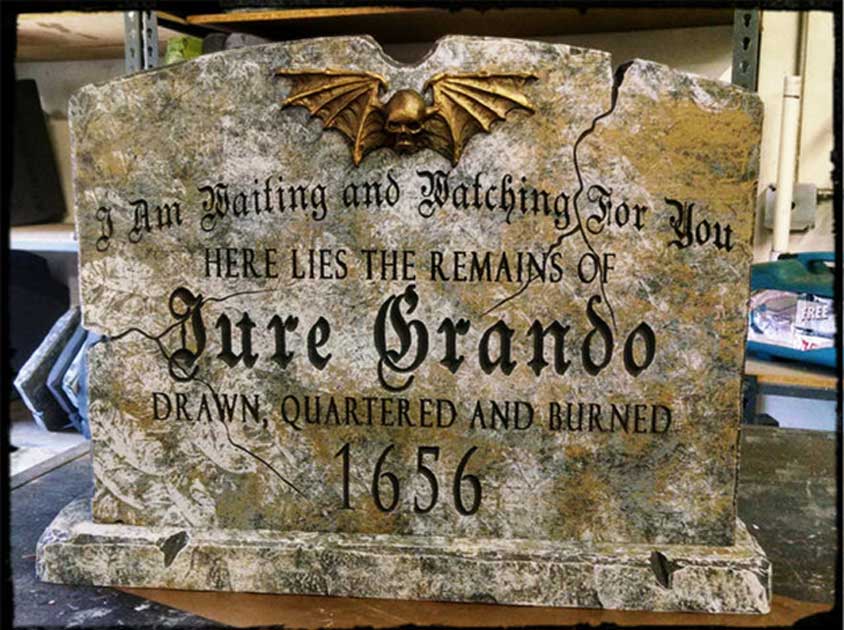
In 1607, the British ship Cormorant sailed from Portsmouth, England, to the Caribbean island of Nevis. The story goes, that one of the crew, Andrew Oglethorpe, was infected by a vampire’s bite which he received in Portsmouth. During the ship’s voyage, Oglethorpe had infected all members of the crew with the vampire’s bite, and overpowered and killed the captain. When the ship landed, the undead crew were quick to spread vampirism to their new home.
One tale from the twelfth century, in the county of Buckinghamshire, tells the story of a recently deceased man who returns from the dead in the form of a spectre, and haunts his widow and relatives. To combat this, they stayed up during the night and made noises to frighten him away. This only made matters worse, as he began to appear during daylight hours. The Bishop of Lincoln became involved and ordered the body to be exhumed, whereupon it was found to be as fresh as the day it was buried. They then cremated the body, and the haunting ceased.
One vampire case involved a man named Petar Blagojevich of Serbia in 1725. Blagojevich was reported to have died at the age of 62, but allegedly returned after his death and killed several people. It is said that Blagojevich came back to his house demanding food from his son, and when the son refused, Blagojevich murdered him. The villagers decided to disinter the body, and examine it for signs of vampirism, they did find the characteristics associated with vampires in local belief, were indeed present. The body was undecomposed, the hair and beard were grown, there was “new skin and nails”, and blood could be seen in the mouth. After that, the distressed people proceeded to stake the body through the heart, which caused a great amount of “completely fresh” blood to flow through the ears and mouth of the corpse. Finally, the body was burned.
There is an old Albanian lore of vampires known as Wurwolaka. This vampire would attack humans at night, ripping their body apart and drinking their blood. Anyone who looks upon this vampire would be stricken with insanity. It is said that the only way to destroy this vampire is to burn its body to ashes.
One of the most insidious vampires in German folklore is the Alp. The alp is a ghoulish looking sorcerer capable of assuming the form of a bird, or cat, in order to work its mischief. The Alp is a sexual predator who attacks women and girls in their bed while they are asleep. A common ability of the Alp, is their power to enter the thoughts of their victims, and create horrific nightmares, these nightmares often result in convulsions and fits of hysteria. The corpses of Alps, who are thought to have risen from the dead, are removed from their graves and ceremoniously burned to ashes.
Ireland has a few vampire tales of its own, such as the Irish Dearg-Due. Dearg-Due, an Irish name meaning “red blood sucker,” is a female demon that seduces men and then drains them of their blood. According to legend, a beautiful young lady from a good family fell in love with a peasant boy. Her family opposed this relationship and insisted she marry an older man from her own class. She died shortly after this marriage, due to the violence of her brutish husband. No one mourned the girl’s death, except the peasant boy who loved her dearly. On her death bed she vowed revenge against those who had wronged her. After her death she arose from her grave and visited the home of her father, where she sucked the life out of him. Next she visited the home of her husband where he lay with his new wife. In anger she attacked both of them draining the bodies of blood. Now she had a taste for blood, and each night she would rise with an insatiable hunger. The only way to stop her was to pile stones on her grave, preventing her from rising.

Scotland has its own impressive catalogue of vampire lore. One story takes place in William Brien House, a hotel in Inverleith, near Edinburgh. During the winter of 1915-1916 staff and visitors were left terrified by an apparition that had an unmistakable air of evil. A medical student named, Andrew Muir, volunteered to investigate this matter. The owner reluctantly agreed, and gave him a bell to ring in case of alarm. Later the med student shut himself inside the room, and shortly after listeners heard horrid screaming and frantic ringing of the bell. The owner rushed into the room, and found the student slumped in his chair, dead. After investigating the body, they found puncture wounds to the throat and shoulders. This murder was never solved. It turns out the former owner of the hotel, a man named William Brien, before he died, gave instructions that his grave was to be forty feet deep, and the coffin was to be kept secure. Was he worried of what he might do if he rose from his grave?
In Greece the dead who return to life, are known as Vrykolakas, the Vrykolakas are generally considered to be the most virulent demons of the undead, they return to life to cause misery to the living. The belief in Vrykolakas was in fact so prevalent, that the Greek Orthodox Church was compelled to address the issue in the first century, to help the growing fears and offer solutions for the suspected mischief of the wandering undead. One of the Church’s solutions to the Vrykolakas, was to dig up the body of the suspected troublemaker, and burn the remains to ash, a remedy that would mollify a nervous population for centuries.
The word Vrykolakas came to Greece and the southern Slavic people of the Balkans. The term originally developed from descriptions of wearers of wolf pelts, and gradually evolved into a description of demons with wolf like characteristics. The Greek interpretation of the term Vrykolakas was essentially vampiric in nature. The same term was used by the Slavs to describe other equally frightful creature, werewolves. One peculiarity of vampire myths of Eastern Europe, is that Slavic vampires can transform not only into bats, but also into butterflies.
The mythological gods, and goddesses of ancient Greece, may well be the ancestors of vampire folklore throughout European history. It was Zeus, the supreme god of Greek mythology, who was responsible for the creation of one of the earliest life-sucking demons in history—and he did it by fooling around with another woman.
Zeus and the Libyan princess Lamia, who was the daughter of the sea god Poseidon, had a romance, and attracted the wrath of Hera, Zeus’s jealous wife. Hera took revenge upon the unfortunate Lamia, by kidnapping and killing all of her God-spawned children, and driving the bereft woman into exile.
Grief-stricken and unable to retaliate against the power of the gods who’d brought her such misery, Lamia began exacting revenge upon humankind by stealing and sucking the life from the babies of mortal mothers. In later legendary incarnations, Lamia evolved into a legion of unearthly beings, with the upper bodies of women, and the lower shapes of serpents. These creatures are called lamiae, and they suck the blood of children. They can also alter their horrific appearances at will to seduce young men and lead them to ruin or death.
Modern Vampires
Today, the modern vampire is sophisticated, suave, charismatic, charming, and knows how to survive in the modern world. Despite the general disbelief in vampiric entities, occasional sightings of vampires are reported. Indeed, vampire hunting societies still exist.
In 1892 a woman from Exeter, Rhode Island, named Mercy Brown, died when she was 19 years old from an unknown illness, however after her death people around town began to report seeing her walking around. When Mercy’s dead body was examined, it reportedly still looked alive. According to the legend, Mercy’s heart was removed in order to end her wanderings.
One story takes place in the Cumbrian village of Croglin, in the years after the English Civil War. The story goes a Miss Cranswell was attacked and bitten on the neck by a horrible figure that climbed into her bedroom through a window. Her two brothers gave chase with pistols, but it moved too fast. They believed it was some lunatic, but the creature returned and attacked again, one of the brothers managed to shoot the creature, hitting it in the leg as it escaped again. The villagers banded together and went to the local graveyard, where they found a vault with all coffins smashed but one. Inside was a mummified shrivelled corpse with a leg badly damaged by a pistol ball. To this day there are sightings of this vampire.
In early 1970 local press spread rumours that a vampire haunted Highgate Cemetery in London. Amateur vampire hunters flocked in large numbers to the cemetery. Several books have been written about the case, notably by Sean Manchester, a local man who was among the first to suggest the existence of the “Highgate Vampire” and who later claimed to have exorcised and destroyed a whole nest of vampires in the area. In January 2005, rumours circulated that an attacker had bitten a number of people in Birmingham, England, fuelling concerns about a vampire roaming the streets. However, local police stated that no such crime had been reported and that the case appears to be an urban legend.
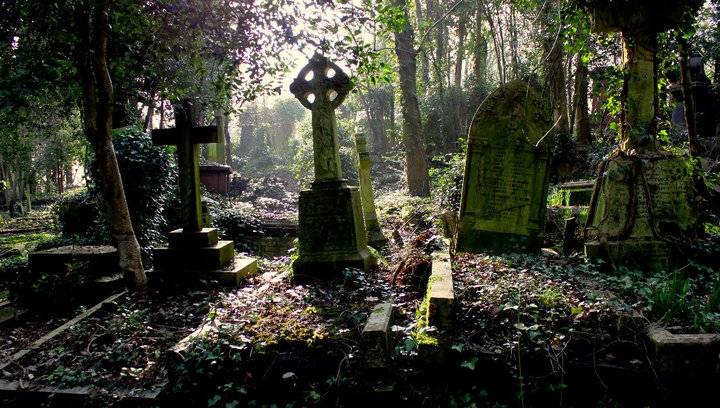
In Romania during February 2004, several relatives of Toma Petre feared that he had become a vampire. They dug up his corpse, tore out his heart, burned it, and mixed the ashes with water in order to drink it.
More recently, in September 2013, archaeologists digging at a medieval complex in Perperikon in southern Bulgaria, discovered the skeleton of a man with a heavy piece of ploughshare – an iron rod used in a plough – hammered through its chest. The grave dated back to the first half of the 13th Century, and is one of several vampire graves in the area. This anti vampire ritual was often applied to people who had died in unusual circumstances – such as suicide.
The Plague
The Bubonic plague, which is said to have begun in Asia in the 1340s, quickly spread to Europe by 1347, is thought to have wiped out one-third of the European population. Commonly called the Black Death.
In Northern and Central Europe, vampires were thought to be bringers of plague. On the other hand, in Southern Europe, it was believed that the Black Death itself attracted vampires. Another belief was that the plague was spread by a vampire known as Taxim. Taxim was an animated corpse fueled by a desire to enact revenge upon everyone who wrong him in life, and nothing will stop him from achieving his goal
Mass burials that resulted from the Black Death were common throughout Europe. Matteo Borrini of the University of Florence in Italy, found the skeletal remains of a woman who had a brick wedged into her mouth, a telltale sign it was assumed that she was a vampire. It was believed that a vampire would eat its way out of a grave, thus a brick was placed in the vampire’s mouth to prevent it from re-emerging
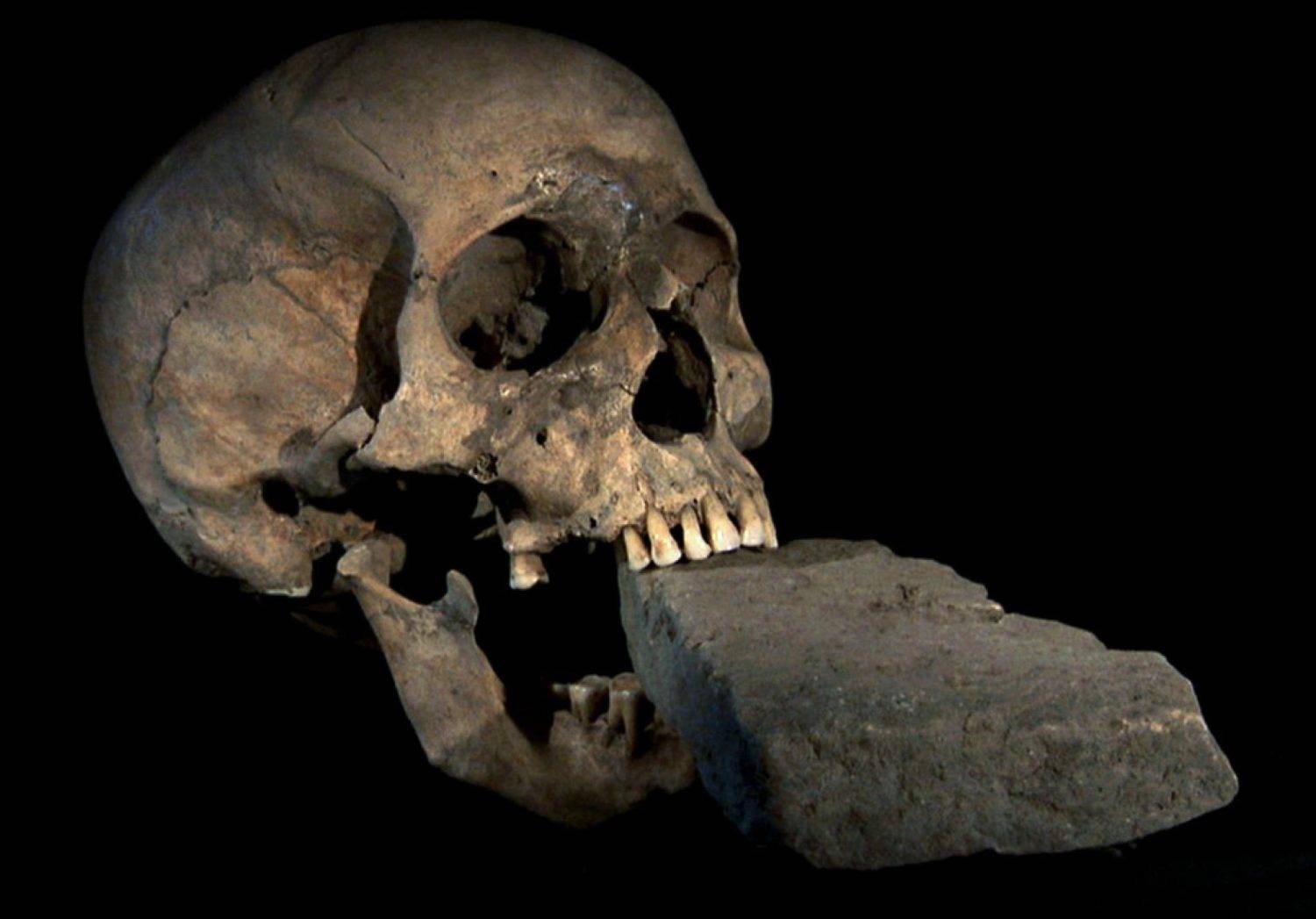
Becoming A Vampire
Throughout folklore there are many varied references to the ways in which an individual could become a vampire, such as practiced sorcery, black magic, suicide, death before baptism, children born out of wedlock, children born with teeth, those with a third nipple, dying a violent death, a cat jumps on someone’s corpse before burial, being the seventh son of the seventh son, red heads, a dead body that has been reflected in a mirror, a stillborn, a bat flying over a corpse or people who were improperly buried.
In Chinese traditions, any corpse that was jumped over by an animal, mainly a cat or a dog, would become one of the undead. Also, a corpse with a wound that has not been treated with boiling water, could become a vampire. In Russian folklore, people who were witches, or who were against the Russian Orthodox Church while they were alive, became vampires.
Individuals suffering an attack from a vampire typically endure several fates. In many instances, the creature sucks enough blood as to cause its victim to perish. Other victims suffer prolonged illness that eventually ends to death. At worst, the prey of vampires are turned into the undead.
To get turned into a vampire you need to exchange blood with a vampire, a teaspoon of blood is enough to turn you into a vampire, first the vampire must drink your blood, second, you must drink the blood of the vampire. You will never find a vampire to turn you into a vampire, to become a vampire you must be chosen.
Fighting A Vampire
How do you kill a vampire? First you must work out which type of vampire you are dealing with, then you can find the appropriate method of destruction. Some vampires can be fought using the basic weapons such as garlic, holy water, and a stake to the heart, but to other vampires this would cause no harm. It is best to start with the basics when fighting a vampire, and if this fails, move to other methods.
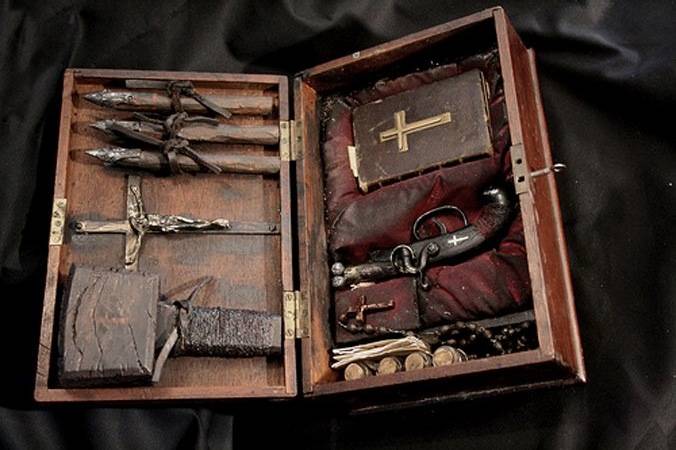
There have been many elaborate rituals used to identify a vampire. One method of finding a vampire’s grave, involved leading a virgin stallion through a graveyard, with a virgin boy riding on the horse’s back, the horse would then supposedly balk at the grave of the vampire. Generally it was a black horse that was required, however in Albania it was a white horse.
Corpses thought to be vampires were generally said to have a healthier appearance, and show little sign of decomposition. In some cases when the suspected graves were open, there would be fresh blood over the corpse’s face, which would be a sign that this is the undead.
Other evidence of vampires in an area, would be an increase in death of cattle, sheep, relatives or neighbours. Some vampires have made their presence noticed by engaging in minor poltergeist-like activity, such as moving household objects, or pressing on people in their sleep.
There are several items around your home that can repel vampires, salt, candles, incense, garlic, crucifixes, and bells. Salt has been a staple, both in ancient and modern folklores, to ward off evil. It is said that a vampire cannot cross a line of unbroken salt, and for this reason a line of salt was often added to fireplaces, doors, windows, even surrounding the whole house. Other folkloric legends have it that vampires and other revenants can be banished to remote islands surrounded by water, thereby assuring that they have no means of interacting with society, and could even die of malnourishment. Salt water in those instances provides a twofold measure of protection, as vampires are also repelled by salt.
Garlic is one of the oldest weapons to ward off and protect against this supernatural enemy. Considering how widespread and accessible garlic has always been, it is small wonder that vampires from all over the world, and from every time period, have been thwarted by this remarkable herb. A member of the lily family, garlic contains natural healing powers and has long been used for medicinal and healing purposes as well as herbal uses
Roman soldiers thought garlic gave them courage, sailors believed it protected them from shipwreck, and German miners believed it protected them from evil spirits when they went underground. In several cultures, brides carried garlic under their clothes for protection, and cloves of garlic were used to protect people from a wide range of illnesses. Modern-day scientists found that the oil in garlic, allicin, is a highly effective antibiotic.
Sanskrit writings dating back 5,000 years, refer to garlic as the “slayer of monsters,” as it was believed its odor warded off evil creatures. The ancient Egyptians said it could increase a person’s physical strength. In Transylvanian lore, placing garlic and a silver knife under someone’s bed would keep vampires away.
In some Slavic and Romania countries it was common to stuff cloves of garlic into a corpse’s nose, mouth, and ears, to prevent them from being turned into a vampire. Also, once they killed a vampire and cut off its head, they would then fill its mouth with garlic to keep it from returning.
During the early Victorian era, when vampire hysteria was everywhere, vendors saw the potential for making money, and they promoted garlic as the ultimate weapon for keeping vampires away. Garlic necklaces were heavily marketed to the people, due to the prevalent lore that vampires drank the blood from the neck. It became such a common belief that it remained unchallenged for decades.
One of the most famous cases of using garlic against vampires, was in Bram Stoker’s classic novel Dracula. In Dracula Van Helsing uses garlic to protect Lucy from the vampire, by placing garlic in her room, around her neck, and rubbing it on all the doors and windows, and fireplace, to keep Dracula from entering.
Quote from Dracula.
We went into the room, taking the [garlic] with us. The Professor’s actions were certainly odd and not to be found in any pharmacopeia that I ever heard of. First he fastened up the windows and latched them securely. Next, taking a handful of the flowers, he rubbed them all over the sashes, as though to ensure that every whiff of air that might get in would be laden with the garlic smell. Then with the wisp he rubbed all over the jamb of the door, above, below, and at each side, and round the fireplace in the same way.
It all seemed grotesque to me, and presently I said, “Well, Professor, I know you always have a reason for what you do, but this certainly puzzles me. It is well we have no sceptic here, or he would say that you were working some spell to keep out an evil spirit.,“Perhaps I am!” he answered quietly as he began to make the wreath which Lucy was to wear round her neck.
The name Dracula comes from the Transylvanian Prince Vlad Dracul, and his son Vlad the Impaler, aka Vlad Dracula. Dracul, meaning “dragon,” this does seem an appropriate name for a predatory supernatural creature who can fly.
Like garlic, the rowan tree, commonly known as the mountain ash, is believed to repel the undead. Its wood was used to make crosses or stakes to drive into a vampire’s heart. Also, those who avoid going near mountain ash could be viewed as vampiric suspects.
Another common food used to repel vampires, are seeds, mustard seed being the most prominent. One legends tells that if a vampire encounters seeds, he will be required to count each seed before moving on. Some folklore mentions that a vampire can only count one seed per year, so even a small amount of seeds could keep a vampire occupied for a long time. Seeds, like salt, were placed around coffins to prevent a vampire rising from the grave.
There have been many methods used to destroy a vampire, with staking being the most common. Each culture had their preferred wood for the stake, Hawthorn in Serbia, Ash in Russia, and Oak in Silesia. A popular choice for the wood is Aspen, as it is believed that Jesus’s cross was made from Aspen. Most vampires were staked through the heart, in Serbia through the stomach, and in Russia through the mouth.
A widespread method of stopping vampires was to bury the corpse upside-down, as was placing sickles or scythes near the grave. Decapitation was the preferred method in Germany, and western Slavic areas, with the head buried between the legs, behind the buttocks, or away from the body. This was done to slow the departure of the soul from the body, which in some cultures was said to linger in the corpse. In addition to decapitation, some had their mouths stuffed with garlic, or had their hearts removed and burned to cinders.
In some traditions a buried body would have a stake driven completely through it to hold it into the ground; some cultures went so far as to drive spikes or thorns through the tongue to prevent the alleged vampire from using it to draw blood. Often stakes were pounded in the ground above a grave, this to assure a reanimated corpse was staked if it attempted to rise from the earth.
Romani people often drove iron needles into the corpse’s heart, eyes, mouth, ears, and between the fingers at the time of burial. A hawthorn stake was often driven through the corpse’s legs.
An ancient Greek practice was placing an obolus in the corpse’s mouth, to pay the toll to cross the River Styx in the underworld. Though it has been argued that the coin was intended to ward off evil spirits from entering the body. Another Greek practice was to place a wax cross and piece of pottery with the inscription ‘”Jesus Christ conquers” onto the corpse to prevent it turning into the undead.
Other measures involved pouring boiling water over the grave, or incineration of the body. In Saxon regions of Germany, a lemon was placed in the mouth of suspected vampires. In Bulgaria, over 100 skeletons with metal objects, such as plough bits, embedded in the torso, have been discovered
Another common form of vampiric destruction is sunlight. However that is not always the case, as there are a host of folkloric vampires who were able to move about during daylight hours. Setting a vampire on fire, as with sunlight, doesn’t provide a guarantee of destruction.
In the 1970 film Taste the Blood of Dracula, Christopher Lee’s Dracula is burned to cinders. Later that year, in Scars of Dracula, these ashes are bled upon by a leaky, blood-engorged bat and lo and behold, it’s enough to resurrect the king of vampires.
In traditional lore, the crucifix will burn the skin of the vampire when pressed against him, and would mark the flesh of a person who has been bitten, but not yet fully transformed into a vampire. Additionally in some legends, the crucifix or cross, will steal the creature’s source of strength, rendering him less powerful. Some stories claim that crosses or crucifixes hung on a door, will keep a vampire from entering a room or that a cross placed on a gravesite will render entering the grave impossible. Perhaps the best thing about crosses is that they’re easily improvised using items such as candlesticks, swords, random bits of wood—anything that can replicate its crossed positioning. However, crosses and crucifixes, while typically used in some measure, often present no threat to a vampire’s existence.
As used in many ceremonies and baptisms, holy water, which is blessed by the clergy, is believed to repel vampires. Because holy water is blessed, it can burn the flesh of vampires, like acid burns human flesh, causing great pain. A new vampire burned with holy water could prove fatal. Throughout vampire lore, the bodies of suspected vampires were covered in holy water to keep them rising from the dead, it was also sprinkled atop of graves and coffins to prevent the undead returning. Much like salt, holy water can be sprinkled onto windowsills and doorways to prevent a vampire from entering.
The Eucharist wafer is another weapon against vampires. The wafer, which is a thin piece of blessed bread, represents the body of Christ in the Holy Communion sacrament. Like the cross, the wafer can burn the flesh of a vampire, and leave a mark if pressed against the skin. The wafer is also another weapon Van Helsing used in Bram Stoker’s Dracula.
As we’ve learned, vampires are infinitely more complex creatures than one might expect, each one possessing its own powers and capabilities, of course, the only way one can protect oneself from a vampire is uncover its weakness, learn how to detect, and then slay it.
Lilith: The Mother Of All Vampires
Lilith was said to have been the first mate to Adam, created by God from the dust of the earth, just as Adam. Because she saw herself as equal to Adam, she refused to take the submissive sexual
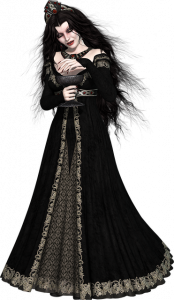
position and cursed him when he refused to see her as an equal. The marriage did not work and they never found happiness. Lilith then ran away to the Red Sea and began sleeping with demons and bearing a 100 children a day.
To bring her back to Eden, God sent three angels with the message, he would kill her demon children if she didn’t return to Adam. She refused and cursed the angels and was banned from paradise and sent to the demon realm. To replace Adam’s wife god took one of Adam’s ribs and created Eve, which enraged Lilith further. Lilith then declared war against mankind and promised to murder children, torment men and destroy women’s hopes and families.
When Lilith moved to the demon realm, she began stealing babies and small children and devouring them. Lilith was said to be like a Succubus, seducing men to steal their sperm, the men never survived their encounter with Lilith. Lilith would also drink the blood of her victims, and use the sperm to conceive her offspring.
Lilith’s offspring were damned to become demons, which is how she obtained her title- “Mother of Demons.” This title was changed to “Mother of Vampires” later in legends.
Unlike Count Dracula, who looks pretty human, Lilith is often depicted with wings, talons, and sometimes even a lion’s head. In fact, it’s only within the last few hundred years artists have portrayed her as a beautiful woman. She’s also associated with owls, jackals, deserts, snakes, and according to the Kabbalah, Lilith’s powers are strongest during the waning of the moon.
Powers Of A Vampire
One of the most discussed characteristics of the vampire is the ability to hypnotize their victims. The benefit of vampiric hypnosis gives the vampire the ability to will another to do their bidding, also the victim under the vampire’s spell typically offers little resistance. This type of control also makes it easier for a vampire to move about society, travel, and generally obtain whatever it is they require with minimal effort.
Other characteristics common to most vampires, are superhuman strength, extreme physical agility, extremely sharp hearing, acute vision, a magnified sense of smell, shape-shift and the ability to hypnotize. Some vampires are also known to fly, levitate, become invisible, time-travel, start fires, use telekinesis and telepathy, self-heal, cast spells and move with extreme speed.
A vampire could live off the blood of one human almost indefinitely, if he drinks only small amounts of blood each day, drinking too much of course, kills the victim. Drinking the blood takes restraint by the vampire as it causes great pleasure and sexual arousal.
When it comes to sleep, the vampire in general, requires as much sleep as the mere mortal, they are not bound to a coffin, as any dark sanctuary, such as a basement or crypt will do. Vampires need rest in order to rejuvenate. An old vampire folklore says that for a vampire to enter a house for the first time, he must be invited.
It is no small mystery that the bat has associations with vampires, and there is good reason. The vampire bat is small in size and has a particularly frightening appearance. It has an erect stance, large eyes, incredibly sharp teeth, and a lower lip possessing a cleft. The vampire bat is indeed a blood drinker that feeds on ground level and attempts to hypnotize its prey before attacking a vein and lapping up blood with a long tongue, it will drink until it’s sated. Like vampires, these bats must maintain regular blood intake or face rapid deterioration.
Finding A Real Vampire
Vampires prefer colder regions with less sunlight and more cloud cover.
Vampires tend to have dark rings around the iris of their eyes.
Vampires are drawn to dark venues and night life such as bars, clubs, lounges and raves
Vampires generally have noticeably different color surrounding the pupil.
They have shallow breathing at all times, except when they are upset or excited.
Vampires will match the heart rate of the person who is next to them while they sleep, or during sex.
A vampire can make you feel however they are feeling in the moment, though this is usually done without the vampire knowing its happening.
A vampire will know when you are looking at them, even if you simply glance in their direction.
Their aura will have a heavy, dark vibe to it.
Their bedroom will usually be the coldest and darkest room in the house.
Vampires tend to unintentionally make electronics malfunction in odd ways when they are around them.
Vampires are sensitive to sunlight and other bright lights, resulting in headaches and stress.
If you decide to seek out a vampire now you have the knowledge, it is not difficult. However, be aware before you do this, aligning yourself with a vampire is a very dangerous game, and once you’re on a vampire’s radar there is no turning back. Your life will never be the same, and you will never be the same again, your life will no longer be your own and there will always be a dark shadow following you. You have been warned, proceed with care.


